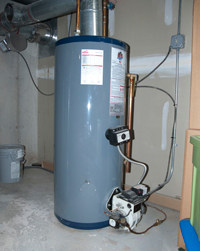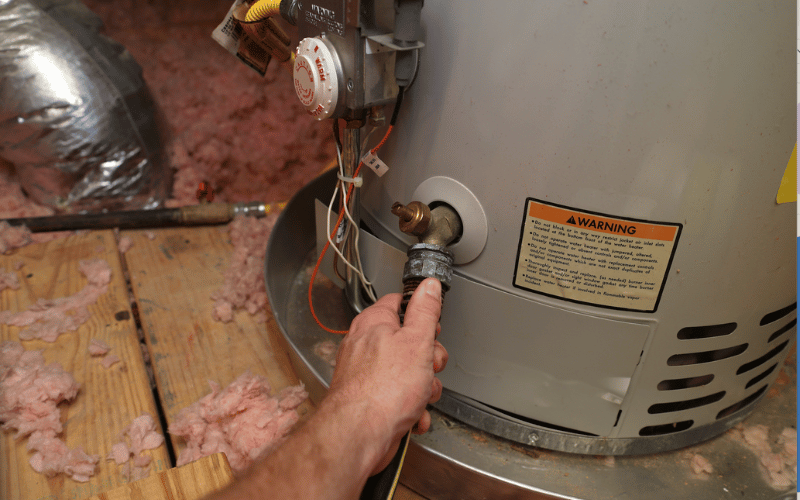Expert Tips for Maintaining Your Home's Hot Water SystemBest Ways to Maintain Your Home's Hot Water System Successfully
Expert Tips for Maintaining Your Home's Hot Water SystemBest Ways to Maintain Your Home's Hot Water System Successfully
Blog Article
Each person maintains their unique conception in relation to Tips on Maintaining a Water Heater.

Warm water is necessary for daily convenience, whether it's for a refreshing shower or cleaning meals. To ensure your warm water system runs effectively and lasts longer, routine maintenance is crucial. This article gives functional ideas and understandings on how to keep your home's hot water system to stay clear of interruptions and costly repair services.
Introduction
Keeping your home's hot water system might appear challenging, yet with a few straightforward steps, you can ensure it runs efficiently for years ahead. This overview covers whatever from recognizing your warm water system to DIY upkeep tips and understanding when to employ professional help.
Significance of Preserving Your Warm Water System
Regular maintenance not only prolongs the lifespan of your hot water system however additionally ensures it operates effectively. Overlooking maintenance can cause reduced efficiency, greater power bills, and even early failure of the system.
Indications Your Warm Water System Needs Upkeep
Knowing when your hot water system requires focus can avoid significant concerns. Look out for indications such as irregular water temperature, unusual sounds from the heating system, or rusty water.
Flushing the Water Heater
Flushing your hot water heater gets rid of debris build-up, boosting performance and prolonging its life.
Checking and Replacing Anode Rods
Anode poles protect against corrosion inside the tank. Examining and changing them when broken is crucial.
Complex Issues Requiring Specialist Aid
Instances consist of significant leaks, electrical problems, or if your water heater is consistently underperforming.
Regular Specialist Upkeep Perks
Specialist maintenance can consist of detailed inspections, tune-ups, and making certain compliance with security requirements.
Checking and Readjusting Temperature Level Settings
Changing the temperature level setups guarantees optimal performance and safety.
DIY Tips for Upkeep
You can execute several maintenance tasks yourself to keep your warm water system in leading problem.
Looking for Leaks
On a regular basis examine pipes and connections for leakages, as these can bring about water damage and higher bills.
Recognizing Your Warm Water System
Prior to diving into upkeep jobs, it's practical to comprehend the basic components of your hot water system. Normally, this includes the water heater itself, pipelines, anode rods, and temperature controls.
Month-to-month Upkeep Tasks
Routine regular monthly checks can help catch minor issues prior to they rise.
Checking Pressure Alleviation Valves
Checking the pressure safety valve guarantees it works appropriately and avoids excessive stress accumulation.
Insulating Pipes
Insulating warm water pipelines lowers warm loss and can save power.
When to Call an Expert
While DIY upkeep is useful, some issues call for specialist knowledge.
Final thought
Normal maintenance of your home's warm water system is vital for efficiency, longevity, and expense savings. By complying with these tips and understanding when to look for professional help, you can make sure a reliable supply of hot water without unforeseen disruptions.
How to Maintain an Instant Hot Water Heater
Before tinkering with your hot water heater, make sure that it’s not powered on. You also have to turn off the main circuit breaker and shut off the main gas line to prevent accidents. Also turn off the water valves connected to your unit to prevent water from flowing into and out of the appliance. 2. When you’re done, you have to detach the purge valves’ caps. These look like the letter “T” and are situated on either side of the water valves. Doing so will release any pressure that has accumulated inside the valves while at the same time avoid hot water from shooting out and burning your skin. 3. When the purge valves’ caps are removed, you have to connect your hosing lines to the valves. Your unit should have come with three hoses but if it didn’t, you can purchase these things from any hardware or home repair shops. You can also get them from retail stores that sell water heating systems. Read the user’s manual and follow it to complete this task properly. When the hosing lines are connected, open the purge port’s valves. 4. You should never use harsh chemical cleaners or solutions when cleaning your unit. Make use of white vinegar instead. It should be undiluted and you’ll probably use about 2 gallons. 5. Now flush your water heater. This task should probably take about 40 minutes. We can’t give you specific directions for this because the procedure is carried out depending on the type, model and brand of your heater. With that being said, refer to the user’s manual. 6. When you’re done draining the unit, you have to turn off the purge port valves again. Remove the hosing lines that you earlier installed on each of the water valves. Put the valve caps (purge port) back in their respective places and be very careful so as not to damage the rubber discs that are found inside these caps. 7. Now that everything’s back in place, check your user’s manual again to find out how to reactivate your water heating system. 8. Once it is working, turn one of your hot water faucets on just to let air pass through the heater’s water supply pipes. Leave the tap on until water flows smoothly out of it. https://www.orrplumbing.com/blog/2014/september/how-to-maintain-an-instant-hot-water-heater/

Hopefully you enjoyed reading our topic about Water Heater Maintenance Tips You Can't Afford to Forget. Thanks a ton for spending some time to browse our blog post. Liked our post? Please share it. Let somebody else check it out. We recognize the value of reading our article about What Kind of Maintenance Do Water Heaters Need?.
Click Here Report this page